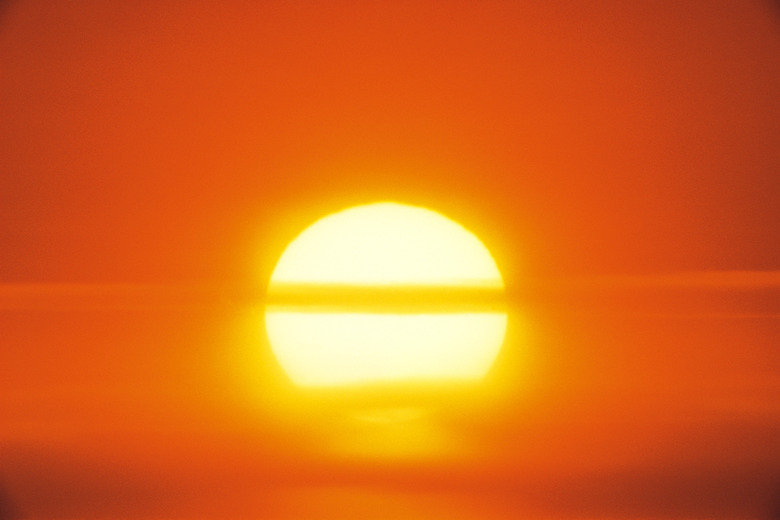What Is The Difference Between Solar Flares And Solar Winds?
Solar flares and solar winds originate within the sun's atmosphere, but differ greatly from one another. Satellites on Earth and in outer space allow a look at solar flares, but you cannot see solar winds directly. However, the effects of solar winds reaching Earth appear to the naked eye when the aurora borealis and aurora australis electrify the night sky.
Solar Winds
Solar Winds
Solar winds originate in the corona, the sun's outermost layer. As the corona expands, it releases in all directions energized protons and electrons made of plasma. With a temperature of nearly 2 million degrees Fahrenheit and traveling at 559 miles per second, solar winds reach not only the Earth's atmosphere but also the atmosphere of every other planet in the solar system.
Solar Flares
Solar Flares
The surface of the sun contain large magnetic loops called prominences. For perspective, Northwestern University's Qualitative Research Group explains that 15 planets the size of Earth could fit into a single prominence. The initiation of a solar flare starts when two magnetic loops touch, causing each to short circuit and spew high-energy plasma away from the sun at the speed of light.
According to NASA official Gordon D. Holman, a solar flare contains energy that's "10 million times greater than the energy released from a volcanic explosion." Amara Graps of the Stanford University Solar Center compares a solar flare's temperature to boiling water: "How hot is 10 million degrees Kelvin? Imagine boiling water. The center of the sun is about 30,000 times hotter than boiling water."
Frequency
Frequency
Solar winds constantly occur due to the corona of the sun continually expanding, but solar flares coincide with the sun's 11-year cycle. At the start of a solar cycle, the sun's magnetic field is weak, leading to fewer solar flares. During each cycle, as the sun's magnetic field gains strength, sunspots serve as visual indicators of solar flare activity.
Affects on Earth
Affects on Earth
Earth's magnetic field deflects solar winds away from the atmosphere, but they still occasionally affect the planet. Solar winds can create a geomagnetic storm that affects satellites used for televisions and cell phones, causing a complete loss of service until the storm passes. Solar winds also create the tail of a comet by pushing the ice and dust away from a comet's body and causing it to trail behind.
References
- Universe Today; What Is Solar Wind?; Jerry Coffey; February 2010
- NASA; What Is a Solar Flare?; Gordon D. Holman; August 2007
- Northwestern University Qualitative Research Group: What Is a Solar Flare?
- Northwestern University Qualitative Research Group: What Is Solar Wind?
- Stanford University Solar Center; How Hot Is the Sun?; Amara Graps
- University of Montana: The Magnetic Sun — The Sun's Magnetic Field Changes
Cite This Article
MLA
Salveson, Evan. "What Is The Difference Between Solar Flares And Solar Winds?" sciencing.com, https://www.sciencing.com/difference-between-solar-flares-solar-winds-12071385/. 24 April 2017.
APA
Salveson, Evan. (2017, April 24). What Is The Difference Between Solar Flares And Solar Winds?. sciencing.com. Retrieved from https://www.sciencing.com/difference-between-solar-flares-solar-winds-12071385/
Chicago
Salveson, Evan. What Is The Difference Between Solar Flares And Solar Winds? last modified August 30, 2022. https://www.sciencing.com/difference-between-solar-flares-solar-winds-12071385/
